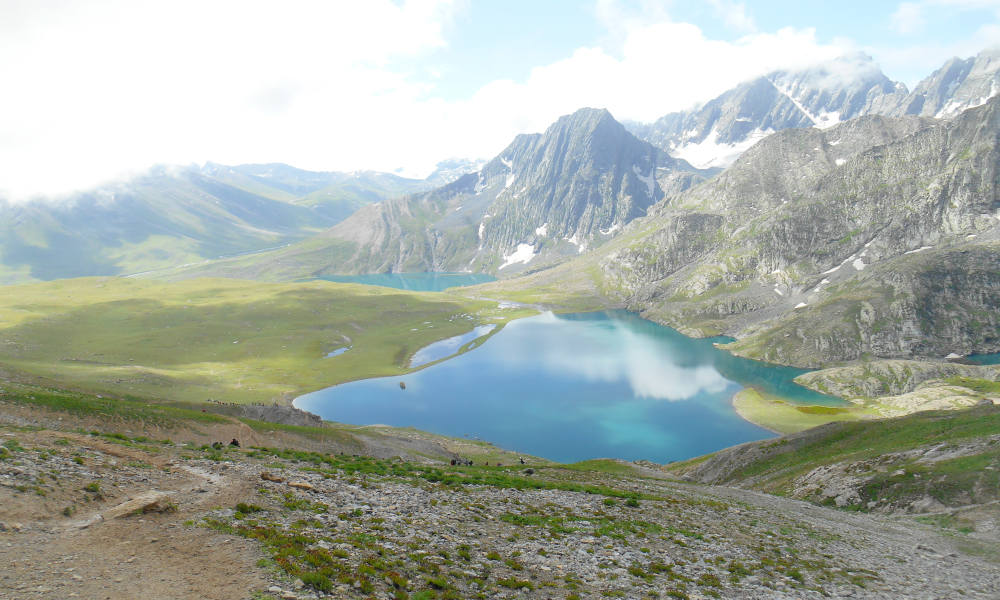Kashmir Great Lakes Trek – KGL which became increasingly popular and endorses Kashmir’s famous title as heaven on earth. The trails will be taken through stunning Alpine and snow-capped mountains, and the trek will be surrounded by beautiful green meadows, rugged terrains, and mountains.
Kashmir Great Lakes Trek is fascinating due to the numerous high-altitude lakes, such as – Vishansar lake, Krishnasar lake, Gadsar lake, Satsar lake, Nundkol lake, and Gangabal lake and alpine meadows scattered with tiny wildflowers, and beautiful campsites. It’s the only trek in the Himalayas that includes three high-altitude passes, 5 river valley crossings, and seven alpine lakes in stunning shades of green, blue, and turquoise.
Every day, you are confronted with boundless, extravagant, and impossibly beautiful lavishness: endless blue skies larger-than-life panoramas of rugged mountains, vibrant meadows brimming with wildflowers, river crossings, and boulder hopping.
The trail climbs to an elevation of 4,2060 mt and toggles between ascents and descents on most days, making it relatively simple to traverse. The only challenge is enhancing the endurance required to cover the long distances (10 km average) required each day.
Best Time to Visit Kashmir Great Lakes
The Kashmir Great Lakes trek is accessible to trekkers from June to September. The reason for this is that during the other months, Kashmir is engulfed in snow due to extreme weather conditions, making snow trekking difficult.
In fact, June to September is considered peak summer months as they transition into autumn. This is also one of the reasons Kashmir looks so beautiful during these months. The colors you see and the landscape change over the course of three months as Kashmir gets ready to welcome Autumn.
Difficulty level
You will trek for seven days, with one day off for rest. Every day, the average distance traveled will be between 12 Km. This also means that you will be climbing for 5 to 8 hours during the day. This can vary depending on your fitness level and the group’s pace. Because the climbs are steep, People who wish to participate in this trek must be physically fit. Every day of the trek, there is a combination of ascending and descending 1500 ft.
We observed three different challenging – difficult sections that you will encounter on this trek:
1. The ascent to Nichnai Pass
2. The ascent to Gadsar Pass
3. Difficult boulder section following Satsar
